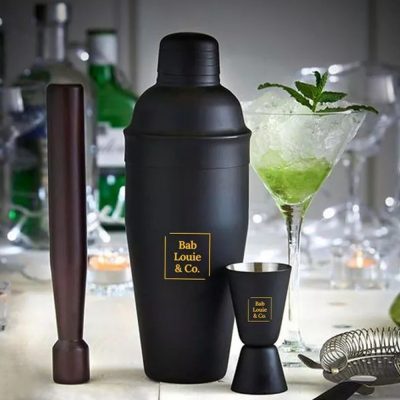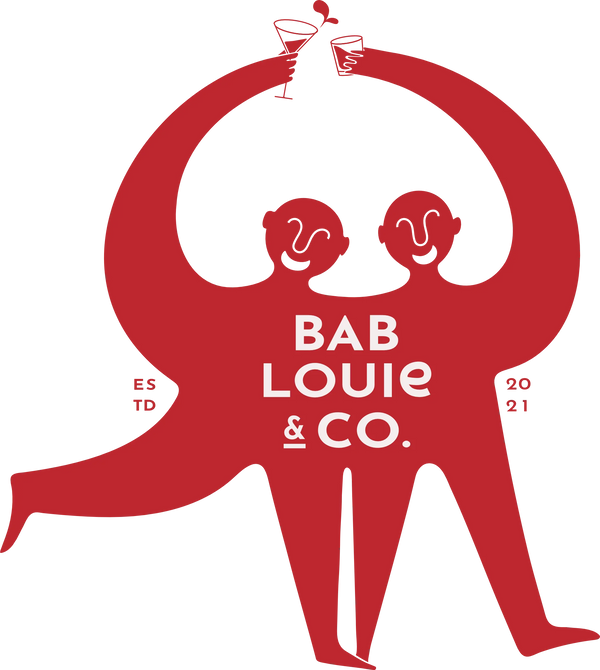
Why Bottle Shape and Quality Are More Than Just Showboat?
Share
The bottle in which your booze is packaged is considerably more than just a container. It is frequently used as a magnificent piece of adornment that borders on art. The way it interacts with the hand, though, maybe the most essential feature. After all, the basic function of a bottle is to be held and poured. If you've never thought about it, you've probably never worked as a bartender. It turns out that your beloved flagons are shaped the way they are for a reason. If the bottle has a gentle curve in the body, it's easy to reach off high shelves; if you have it in your well, the beveled neck provides a resting area for your fingers to grab and invert the bottles without fumbling. One of the most natural experiences behind the bar is to have the bottle poised on the back of your hand, between your fingers, getting eye level to the pour. In the categories of rum, whiskey, and, especially, cognac, where showmanship is a feature, more round shapes are more prevalent. Behind the bar, Hennessy's distinctive X.O bottle is typically a focal point. It's supposed to look like a cluster of grapes when poured inverted. Practicality is treated with the same reverence as presentation in the new elements. Even yet, you won't see many bartenders doing fast pours with high-end bourbon. When it comes to efficiency, neck design is everything therefore some bartender favorites aren't what you'd think. At Bab Louie, we take special care of the bottle quality that is used to stuff our savory premix and bitter blends for you. And, as Bab says, we want you to boast them in your bar, not fridges. We cap them with a built-to-last wooden cork so that like your spirits, your flavors, too, should stay with you for long without losing their essence. For the bottles, Amber’s always been the go-to material! 

Photochemical reactions can be avoided by using amber glass. A photochemical reaction is a sort of chemical reaction that is caused by the absorption of light energy. This reaction has the ability to transform chemical characteristics into excited states with attributes that differ from the original. Because beer contains many reactive components such as sulphur, it reacted to light and generated an odor like that of a skunk. Photodegradation is more common in foods and beverages (or liquor) that include a lot of fat, proteins, and vitamins. So, what happens next? It has the ability to alter the color of a fruit or vegetable, as well as eliminate vital vitamins and alter the taste. Why? You ask. The addition of iron, sulphur, and carbon to the molten mixture produces amber glass. These ingredients give amber glass its distinctive hue — a rich, deep umber that conjures up images of a good brew for many people. There's a reason for this, and it has something to do with how amber glass shields its contents from light. Another reason to use Amber is that glass is largely recyclable, though the restrictions can be complicated when color is involved. Amber glass is 100% recyclable, but it can only be broken down and reformed into a new amber glass bottle, jar, or container. Amber bottles may be cleaned and reused over and over again. They're more robust than plastic and take years to decompose completely. Furthermore, unlike plastic, glass is not permeable, therefore it is totally safe to reuse. But beyond bottle quality, shape, too, is a driving factor. After all, we remember all the vintage and classic brands by their design, than anything else, don’t us? Also, bartenders are being pushed to their limits in order to create beautiful, multi-component drinks in the quickest amount of time feasible in this renewed age of bartending. It's critical that the bottle's design accommodates a high-quality ingredient while also being simple to use. Die-hard cocktail-cuckoos would recall, the Maker's Mark bottle made the scene in the late 1950s, they were distinctly picked out owning to their unique bottle design that gurgled when you poured it. It was the first time non-functional sealing wax was used in the design of a liquor package. On the bar shelf, the red wax really stood out. People's eyes would light up when they spotted that bottle. Mythology and legends have inspired many a bottle design and antiquity, again, was also the idea for one of the most contentious bottles in the bartending world. The bottle's tall, slender shape, with numerous tapered flat edges, was inspired by ancient Roman temple columns and the tremendous splendour of the Roman empire, towering over the rest of the liquor shelf, it's frequently too tall to even fit on a back bar. Liquor brands are coming around to the school of form follows function, recognizing the greater necessity to keep themselves comfortable in the hands that pour them. In addition, more user-friendly bottles are becoming more popular. Several of the new-age bottles have been redesigned to reflect this. When you're preparing cocktails, they're simple, clean, and they feel great in your hand. Although bartenders must examine bottle design as a matter of professional need, there are numerous reasons why it should be considered by consumers. Last but not least, it makes for interesting pub conversation. For more information: Bablouie & Co.
